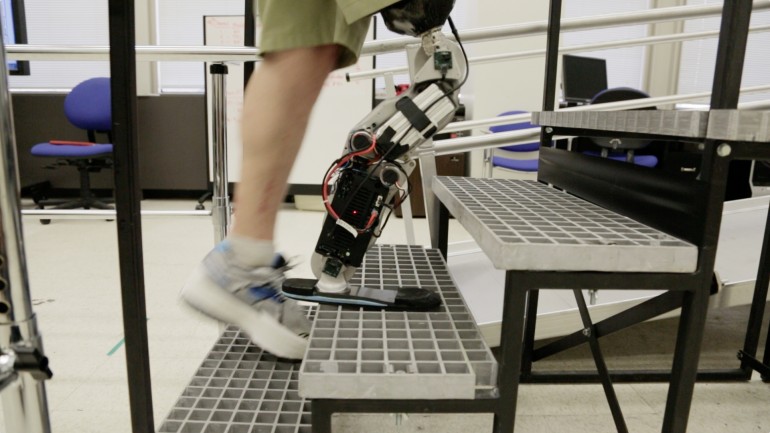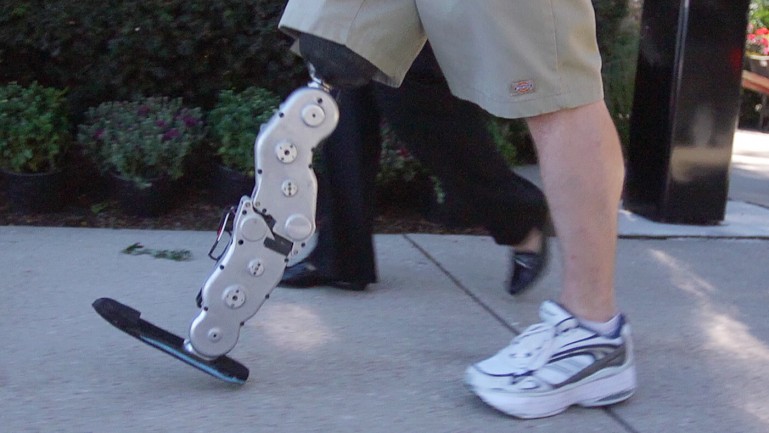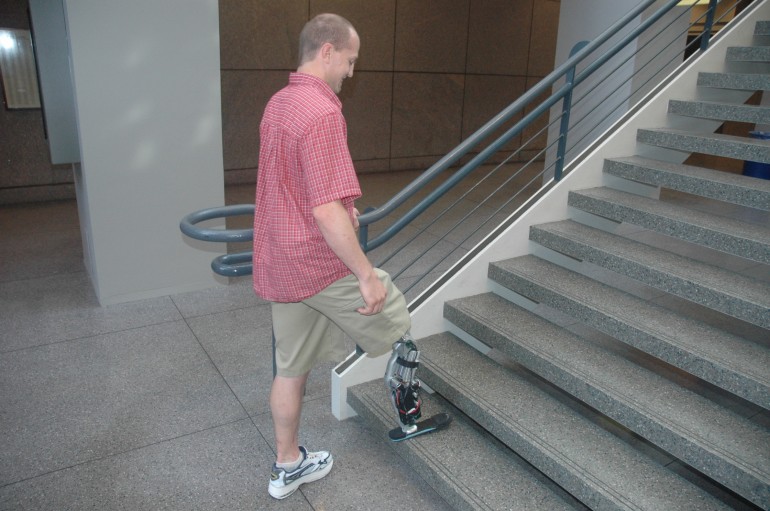Nerve Controlled Leg Prosthetic Climbs Chicago’s Willis Tower

Nowadays there seems to be a 5K fundraising event every other weekend. They’re a good way to have fun while raising money for causes. I recently did a zombie themed one that was great fun (I survived!). Another fitness themed fundraising type of event is running/walking up skyscrapers. Recently a man with a leg prosthetic did this by going up 103 flights of the Willis Tower (Sears Tower).

Backstory
The man who did this is Zac Vawter, a software engineer who lost his leg in a motorcycle accident. Here is a bit by the Rehabilitation Institute of Chicago (RIC) on how he came to this point:
In 2009, then 27-year-old Zac Vawter was enjoying an afternoon ride on his motorcycle in rural Washington State when he took a turn too fast and crashed. Vawter was conscious as he dialed his cell phone to call for help, knowing that what occurred was very bad. Three days later, his left leg was amputated above the knee. Months later, Vawter was connected to RIC’s Center for Bionic Medicine, the world leader in neural control for prosthetic devices, to participate in a ground-breaking clinical research trial focused on developing prosthetic legs controlled by the patient’s own neural information, a process RIC introduced in upper-arm amputees in 2005.

The Bionic Leg
The leg prosthetic Vawter has uses the same reinnervation technology I wrote about last week. That article talked about upper arm prothetics that used muscles and nerve signals to control an arm prosthetic. This leg prosthetic works in the same way where thoughts are sent to nerves that connect to the prosthetic and tell it what to do. This leads to a leg that moves naturally when walking and even climbing stairs.

Fundraising Climb
Vawter climbed the Willis Tower as part of the SkyRise Chicago event which raises money for RIC. He successfully completed his goal and helped raise money as a thank you. You can watch videos of the Vawter during testing and at SkyRise Chicago below. To read more on the technology read these articles by RIC and Yahoo.
